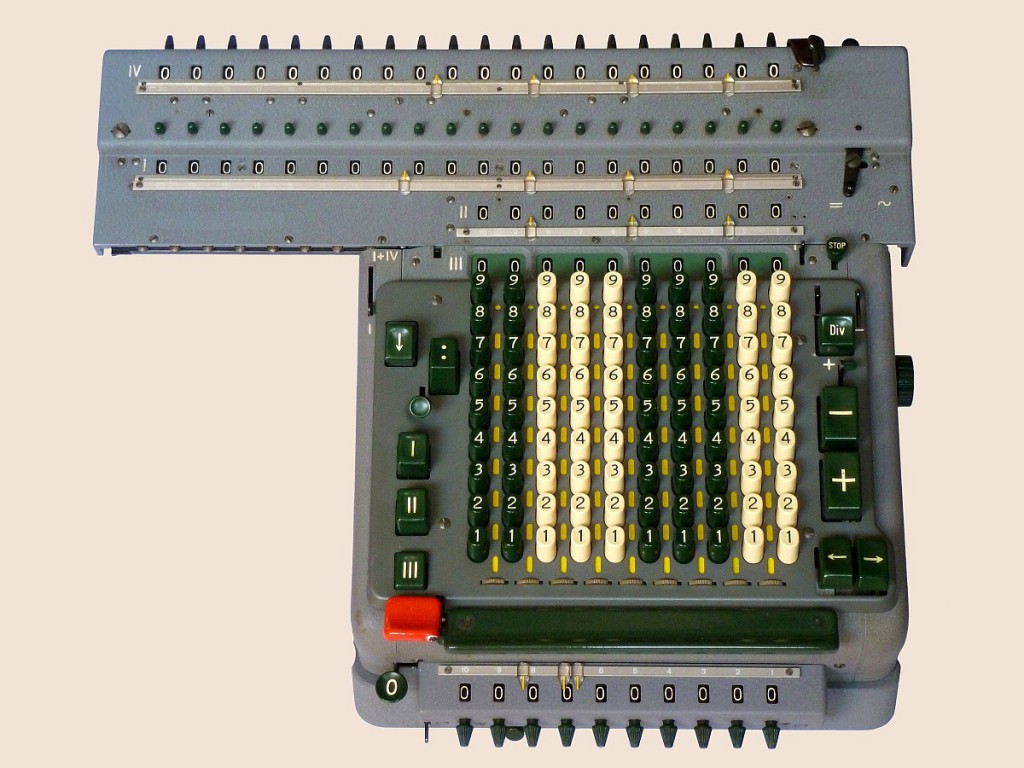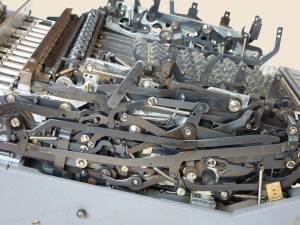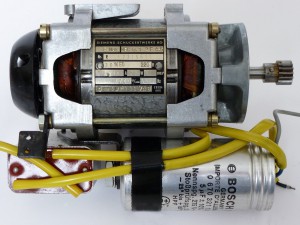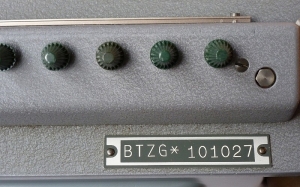
Madas 20BTZG, as its sister 20BTG, is considered as the culminating point of development concerning the calculators made by the firm Egli. It was also the most expensive one (four times the price of a 16eN, for example). An additional register is fitted to this model. This is an “Accumulator Product Register”, generally named “Register IV”. It can be cleared only by means of a “thumb-lever” to its immediate right. Whereas, normally, “Register I” clears automatically before the formation of each new product, “Register IV”, as its name implies, accumulates successive products. It may be disconnected by moving the lever situated on the machine-casing to the left of “Register III”.
A black lever situated to the right of “Register I and II” allows choosing if a number added into “Register I” is added to, or subtracted from “Register IV”. In this way, for example, by using this control, it is possible, while forming positive individual products in “Register I”, to accumulate them negatively in “Register IV” or vice versa. This carriage, named “Triplex”, is more complex than on other models. Several hundred of manufactured pieces have to be assembled. Removing and refitting the Triplex carriage is a rather tricky task, as we can see with the presentation, explained in detail by John Wolff, on its John Wolff’s Web Museum.
Model 20BTZG, like all other models with a “Z” in the model-number, has a tens-carry-over which extends to the full capacity of the Product register (Register I), while models without “Z” have tens-carry to two dials to the left of that aligned with the extreme left-hand column of keys.
Below, we can see a general overview of the inside, from the left-hand side. This side holds many complications, notably because of its responsibility for the multiplication mechanism. At right, a photo of the electric motor, made by Siemens. This motor has a rotation speed of 430 rpm.
Madas 20BTZGgsa_admin2021-09-20T09:57:59+02:00



